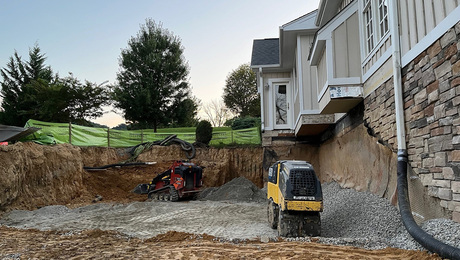Hi guys first of all I have been away for a looooong time. Nice to be back for the wealth of knowledge info and advice.
I presently have a handyman service doing quite well. I do the things I am comfortable with but also respect other trades.
I was at a clients recently purchased house, and we were doing a walkthrough, painting cleanup etc. He is going to rent the place. He complained that none of the breakers were marked, I said no problem I can map it for you. I started and quickly found that many outlets were dead including a bathroom add on. However all breakers were on, and these rooms were previously working. The boxes are older square d, 100A 20 space (I think)
So off comes the cover and out comes the tester wiggy type, I start to inspect and find several loose connections on breaker lugs, great I think maybe… I tightened them up, not the problem, as I am testing the breakers for proper volatage, positions one and three and two and four are both 240v 2 pole, with the bottom half dead on each breaker. I also notice further down breakers are out on coresponding slots(9 and 10) however breakers in between are functioning on both sides.
I took one of the affected breakers out and switched slots with the same result, with the tester i then probed the asctual tab attached to the bus and probed the neutral bar- nothing no reading. I didnt pull all the breakers and it seems unlikely that power was intermittent on the bus, I saw no sign of bad arcing or burning.
At this point iadvised the owner to have it checked by an electrician. iam not an electrician, and am just curious for my own knowledge what might be causing this.
Webby


















Replies
Single Phasing
Without being able to see the bussing on the panel, it sounds like the service is single phasing - meaning the service has lost one of the lines coming in. This could be at the transformer, the service drop, in the meter, etc. There is also the possibility that the main breaker is bad as well and you have lost a leg there.
You noted that you have respect for other trades, etc. yet you had no problem jumping into an electrical panel and tightening loose connections, getting out your wiggy type tester, etc. Good luck to you. I actually work pretty much exclusively on medium and high voltage applications which most people think are highly dangerous (and it is- no doubt), but far more people are killed (electrocuted) every year by 120V household current than will ever be killed by utility class voltages. Please be careful and remember that it is the path of current through your body, the amount of amperage (actually milli-amps) and duration that kill. If you are going to work in some crappy old panel in a house, put one hand in your pocket and don't stand in a puddle in the basement. Or better yet, call a qualified electrician. It amazes me how many people have no problem working on the wiring in their house, but would never touch the plumbing. They would rather take a chance of getting shocked or potentially burning down their house than maybe get wet, make a mess or get a little turd on their hands.
I bet he wasn't wearing safety glasses either.
Understand how the typical 240V breaker panel is constructed.
The two "sides" of the 240V line come in the top and bus bars run down each side, with tabs sticking out alternately from one side and then the other to allow breakers to be connected.
If one "side" of the 240V line is dead, every other tab will be dead as well. This will mean half of every 240V breaker, or every other 120V breaker.
Typically there is a main breaker or fuse somewhere, either at the top of the breaker panel or near the service entrance. This breaker/fuse can be blown on one side, or it's not totally unknown for a connection to be loose where the incoming wire or main breaker attaches to the bus bar (or somewhere between there and the service entrance).
But sometimes the failure is traced all the way back to the meter, in which case the power company must become involved.